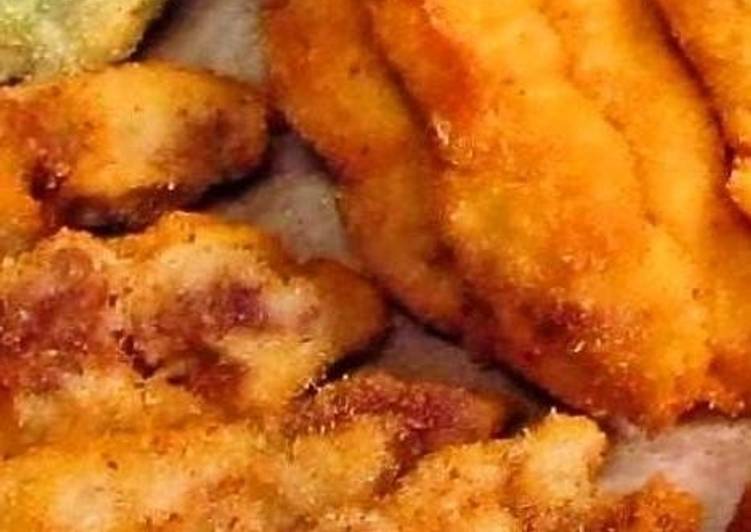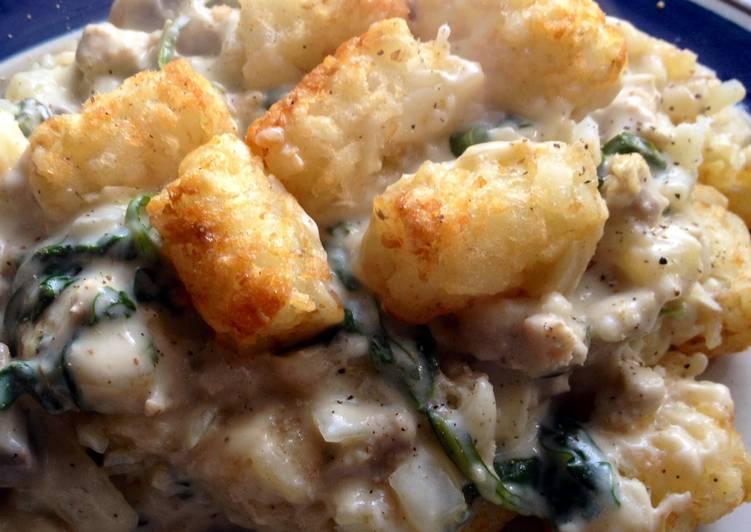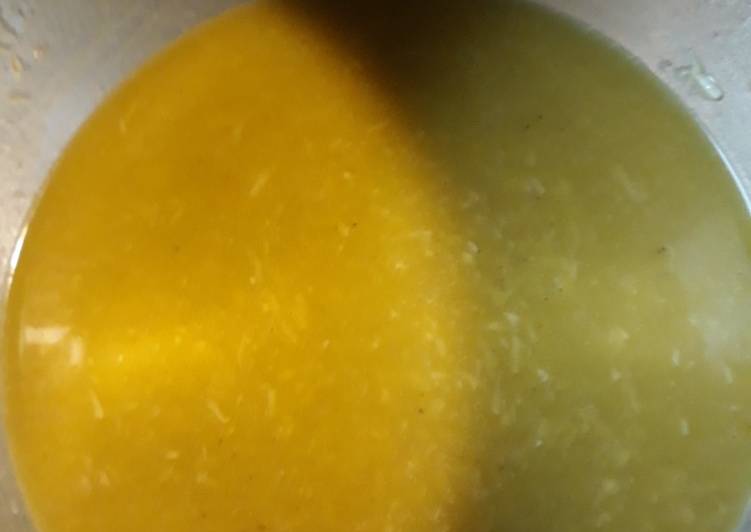
Hey everyone, it is me again, Dan, welcome to my recipe page. Today, I will show you a way to make a special dish, kushikatsu (deep fried skewers) from shinsekai in osaka. One of my favorites food recipes. For mine, I will make it a little bit unique. This will be really delicious.
Kushikatsu is deep-fried, battered food on skewers - the perfect drinking food. Here's our list of recommended kushikatsu restaurants in Osaka. Kushikatsu refers to a genre of deep-fried, battered skewered food that you eat dipped in a thin, black, sweet-tangy sauce.
Kushikatsu (Deep Fried Skewers) from Shinsekai in Osaka is one of the most favored of recent trending meals on earth. It’s easy, it is fast, it tastes delicious. It is appreciated by millions daily. They are fine and they look fantastic. Kushikatsu (Deep Fried Skewers) from Shinsekai in Osaka is something that I have loved my entire life.
To get started with this particular recipe, we have to prepare a few components. You can cook kushikatsu (deep fried skewers) from shinsekai in osaka using 20 ingredients and 19 steps. Here is how you cook that.
The ingredients needed to make Kushikatsu (Deep Fried Skewers) from Shinsekai in Osaka:
- Make ready Special sauce
- Prepare 80 ml Red wine
- Get 300 ml Japanese Worcestershire sauce
- Make ready 1 tsp Ketchup
- Get 1 tbsp Tonkatsu sauce
- Make ready 1 tbsp Honey
- Get 2 tbsp Brown sugar
- Get 80 ml Bonito dashi stock
- Prepare The batter
- Make ready 200 grams Cake flour
- Take 1 Egg
- Prepare 100 ml Milk
- Make ready 100 ml Water
- Take 50 grams Yamaimo (grated)
- Get Your favorite ingredients
- Prepare 1 as much (to taste) Cherry tomatoes, asparagus, eggplant, onion, etc.
- Get 1 as much (to taste) Beef round, thinly sliced cut up pork, chicken thigh meat, shrimp, etc.
- Make ready 1 as much (to taste) Boiled quail eggs, chikuwa stuffed with cheese, etc.
- Prepare Panko
- Take 200 grams Panko (dried)
Kushikatsu refers to skewers of meat, vegetable, fish, and other ingredients, which are then dipped into batter, breaded and deep-fried. It is a very popular casual food in Osaka. Kushikatsu restaurants can be found all over Osaka but Shinsekai is popular for the large. A hugely popular Osaka street food, Kushikatsu (Kushiage) are skewered meat and veggies that are breaded with panko and deep fried to golden crisp.
Steps to make Kushikatsu (Deep Fried Skewers) from Shinsekai in Osaka:
- Make fine panko first. Put panko in a sieve, and push through the mesh to make them fine.
- Next make the special sauce. Heat the red wine to evaporate the alcohol, add the bonito dashi stock, then honey and sugar and dissolve.
- Put in the rest of the sauce ingredients and bring to a brief boil to complete the sauce. Let cool.
- Next make the batter. Beat the egg, and combine with the milk and water. Add the flour to this and mix well. When there are no more lumps, add the grated yamaimo.
- The skewers should be less than 15 cm long. The most important point is to cut the skewered ingredients small. This way they will fry up quickly with a crispy finish, and will look good too!
- Cut beef round or chicken thigh meat into 2 cm cubes, and skewer 3 at a time. Squeeze the meat when they are on the skewer to even them out. Aim to put a bit less than 20 g of meat on a skewer.
- Spread out the pork slices neatly, season lightly with salt and pepper and wrap around the skewers. Squeeze the meat around the skewer to even it out. Sliced pork skewers are tender, delicious and inexpensive!
- Take the stem ends off the cherry tomatoes before skewering them. Poke several holes in them to prevent them from exploding when fried! Do this when the tomatoes are on the skewer.
- Take the shells and tail of the shrimp and de-vein. Cut the tips off the tails. Straighten out the shrimp and skewer them through from the head.
- Cut each chikuwa into 5 pieces and stuff with cheese. Skewer 2 pieces at a time.
- Cut up the cabbage roughly and wash.
- Dip the skewers in the batter. Shake off any excess batter, then coat the skewers in the panko. Once you have breaded about 10 skewers, start frying.
- Fry them quickly in 170°C oil. The vegetable skewers take about a minute, and the meat skewers take about 2 minutes to cook.
- When the skewers are golden brown and crispy, drain off the oil very well and put the skewers on a rack. When the oil has drained off completely transfer the skewers to a serving plate.
- Scoop out any panko left in the oil after each batch is fried. The panko are very fine, so use a tea strainer to remove them until the oil is clean.
- Dip the skewers completely in the special sauce. Dip the cut cabbage that's served with the skewers in the sauce too! Beer is the drink to serve with this!
- Today I fried quail eggs, cherry tomatoes, lotus root, shrimp, chikuwa stuffed with cheese, beef round, thinly sliced pork, okra, eggplant, chicken thigh meat, and asparagus.
- These are authentic kushikatsu from a famous restaurant in Shinsekai. They were amazingly yummy!
- To boil quail eggs see. Don't buy precooked quail eggs. - - https://cookpad.com/us/recipes/148950-how-to-boil-easy-peel-quail-eggs
Dip in a savory sauce to enjoy! When we were in Osaka this past summer, one of the local specialties that we enjoyed most was Kushikatsu (串カツ). Osakatsu serves Kushikatsu, soul food which originates from a small small neighborhood, Shinsekai, located in Osaka, Japan. By its definition, kushi means skewers, while the word katsu means a deep-fried cutlet of meat. In this case, the meat and vegetables are skewered, battered, and fried.
So that is going to wrap it up with this special food kushikatsu (deep fried skewers) from shinsekai in osaka recipe. Thank you very much for your time. I am confident you can make this at home. There’s gonna be more interesting food in home recipes coming up. Remember to bookmark this page in your browser, and share it to your loved ones, friends and colleague. Thanks again for reading. Go on get cooking!

